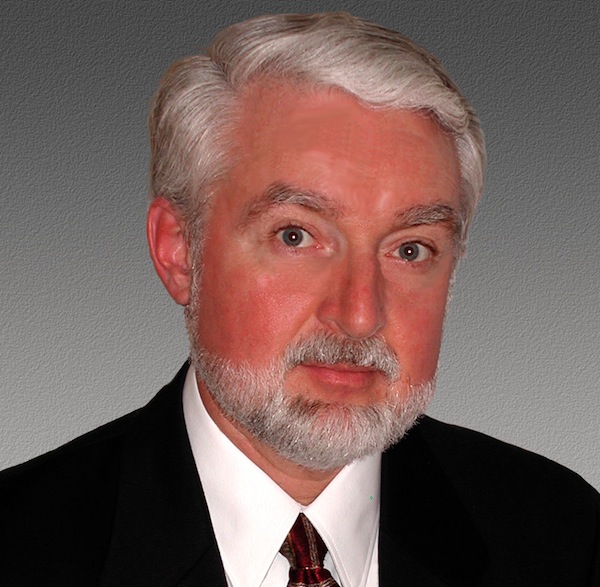The Board of Regents of the American College of Healthcare Architects (ACHA) has named Peter L. Bardwell, FAIA, FACHA of Columbus, Ohio as 2013 national President.
“We should strive to be the most visible and the most positive influence in the marketplace among all healthcare design organizations, “noted Bardwell in his initial message to the College. “Achieving ACHA certification should mark the recognition that this is an obligation to serve as an effective leader and mentor.”
Established in 1999, ACHA (www.healtharchitects.org) offers board certification within the specialized field of healthcare architecture and is the first specialty certification program to be recognized by the American Institute of Architects (AIA). Certificate holders include healthcare architects throughout the United States and Canada with specialized skills and proven expertise. Before earning the ACHA Board Certificate, healthcare architects must document their experience and demonstrate their skills through a computer-based examination, submission of a portfolio of relevant work, and provision of references. ACHA requires its certificate holders to work towards the improvement of healthcare architecture on behalf of the public, to practice in an ethical manner, to maintain high standards of specialized continuing education, and to add to the body of knowledge.
Peter L. Bardwell, FAIA, FACHA brings over 35 years of experience in healthcare facilities planning and design spanning 22 states and 5 countries, totaling over $2 Billion in construction value within the past 5 years alone. He is honored to be a nationally-recognized practitioner, speaker, and author in healthcare planning and design --- and to be among fewer than 40 practicing architects in the nation to be recognized as a Fellow in both the American Institute of Architects and the American College of Healthcare Architects.
Founded in 2002 and based in Columbus, Ohio, BARDWELL+associates, LLC (www.bardwellassociates.com), focuses exclusively on the planning and design of healthcare facilities with services including facilities-related strategic planning and positioning, site and facility master planning, and functional space programming and conceptual design.
Contact:
Peter L. Bardwell, FAIA, FACHA
pbardwell@bardwellassociates.com
(614) 239-1639
Related Stories
| Nov 2, 2010
Cypress Siding Helps Nature Center Look its Part
The Trinity River Audubon Center, which sits within a 6,000-acre forest just outside Dallas, utilizes sustainable materials that help the $12.5 million nature center fit its wooded setting and put it on a path to earning LEED Gold.
| Nov 2, 2010
A Look Back at the Navy’s First LEED Gold
Building Design+Construction takes a retrospective tour of a pace-setting LEED project.
| Nov 2, 2010
Wind Power, Windy City-style
Building-integrated wind turbines lend a futuristic look to a parking structure in Chicago’s trendy River North neighborhood. Only time will tell how much power the wind devices will generate.
| Nov 2, 2010
Energy Analysis No Longer a Luxury
Back in the halcyon days of 2006, energy analysis of building design and performance was a luxury. Sure, many forward-thinking AEC firms ran their designs through services such as Autodesk’s Green Building Studio and IES’s Virtual Environment, and some facility managers used Honeywell’s Energy Manager and other monitoring software. Today, however, knowing exactly how much energy your building will produce and use is survival of the fittest as energy costs and green design requirements demand precision.
| Nov 2, 2010
Yudelson: ‘If It Doesn’t Perform, It Can’t Be Green’
Jerry Yudelson, prolific author and veteran green building expert, challenges Building Teams to think big when it comes to controlling energy use and reducing carbon emissions in buildings.
| Nov 2, 2010
Historic changes to commercial building energy codes drive energy efficiency, emissions reductions
Revisions to the commercial section of the 2012 International Energy Conservation Code (IECC) represent the largest single-step efficiency increase in the history of the national, model energy. The changes mean that new and renovated buildings constructed in jurisdictions that follow the 2012 IECC will use 30% less energy than those built to current standards.
| Nov 1, 2010
Sustainable, mixed-income housing to revitalize community
The $41 million Arlington Grove mixed-use development in St. Louis is viewed as a major step in revitalizing the community. Developed by McCormack Baron Salazar with KAI Design & Build (architect, MEP, GC), the project will add 112 new and renovated mixed-income rental units (market rate, low-income, and public housing) totaling 162,000 sf, plus 5,000 sf of commercial/retail space.
| Nov 1, 2010
John Pearce: First thing I tell designers: Do your homework!
John Pearce, FAIA, University Architect at Duke University, Durham, N.C., tells BD+C’s Robert Cassidy about the school’s construction plans and sustainability efforts, how to land work at Duke, and why he’s proceeding with caution when it comes to BIM.
| Nov 1, 2010
Vancouver’s former Olympic Village shoots for Gold
The first tenants of the Millennium Water development in Vancouver, B.C., were Olympic athletes competing in the 2010 Winter Games. Now the former Olympic Village, located on a 17-acre brownfield site, is being transformed into a residential neighborhood targeting LEED ND Gold. The buildings are expected to consume 30-70% less energy than comparable structures.















